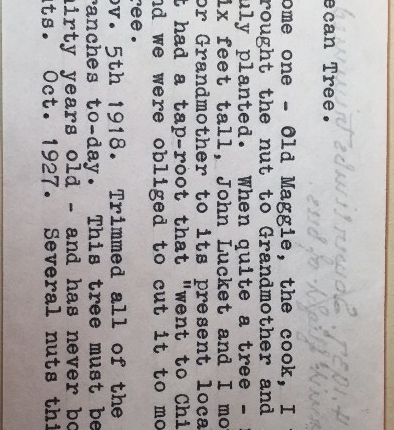Remembering Austin Kiplinger, Tudor Place Champion
| FOR IMMEDIATE RELEASE | CONTACT |
| November 23, 2015 | Mandy Katz |
| Director of Communications | |
| ph: 202.580.7329 |
This is a charmed place. It just raises your spirits whenever you’re here. And I feel that way and I have felt that way for many years and I’m continuously reminded that there is a continuity in life, and the more we know about it, the better we can cope with changes that are coming…
— Austin Kiplinger, Honoree, 20th Annual Tudor Place
Spring Garden Party, May 2012
The board and staff of Tudor Place mourn the loss of Trustee Emeritus Austin H. Kiplinger, known as “Kip,” who died November 20 at age 97. His passing leaves a void among lovers of D.C. history. His enthusiasm for preservation and gleanings from our shared past will be sorely missed.
“Working with him for 15 years, I found him to be gracious, ebullient, and generous in sharing his love for the history he knew so well of this city and of Tudor Place,” said Leslie Buhler, Tudor Place Executive Director until October 2015. “He connected the past to the present in very real terms,” she added, praising his “extraordinary memory, sparkle in his eyes, and thirst for knowledge.”
Mr. Kiplinger championed Tudor Place since the museum opened in 1988. He first delved into its history after he and his wife purchased Montevideo, a dilapidated 1830 house in Montgomery County, Maryland, in 1958. Montevideo’s builder, John Parke Custis Peter, was the son of Martha Parke Custis and Thomas Peter, the founders of Tudor Place. Peter built Montevideo to match the Federal-style center block of Tudor Place, his childhood home. His parents’ graves and those of two of their children remain on the property.
With painstaking attention to detail and sound preservation practices, Mr. Kiplinger restored Montevideo, raising his family there with a keen shared interest in its past and its “parentage” at Tudor Place, Ms. Buhler noted. When Tudor Place opened to the public in 1988, he joined the foundation’s Board of Trustees, becoming president two years later and serving in that role for eight years. He continued to support the museum for the rest of his life. Tudor Place celebrated his lasting leadership and commitment in 2012 by naming him honoree of the 20th Annual Spring Garden Party.
On that occasion, he recalled first encountering Tudor Place not as a homeowner, but as a boy. “When I was in my teens and a student at the great, distinguished Western High School here in Georgetown,” he told the audience of several hundred gathered in his honor, “I used to wander past this great place up on the hill and wonder about it and wonder what went on behind that gate. And little did I know at the time that a lot of American history went on behind that gate, a reflection of it at least, in five generations of one family.” (See the video.)
A pioneering publisher and journalist, Mr. Kiplinger recognized innately the importance of knowing history to understanding modern times. At Tudor Place, he said in his Garden Party address, six generations of one family “lived through some of the most tortured times in any nation’s history… And we can deal with the present and the future better if we know something about the past.”
Tudor Place extends condolences to Mr. Kiplinger’s his son and daughter-in-law, Knight and Ann Kiplinger, his companion, Bonnie Barker Nicholson, and the extended Kiplinger family.










